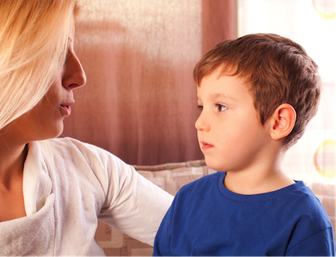 Good communication and interpersonal relationships are as important for families and schools as they are at work. Aggression and coercion are harmful to the wellbeing of adults and children in any setting. The principles we teach to help make work environments more nurturing are the same as those prevention scientists are now following to help families and schools become more nurturing. In his new book, The Nurture Effect, Anthony Biglan, Ph.D., a senior scientist at Oregon Research Institute, describes numerous family and school programs that help reduce the use of coercive behavior. For example, beginning in the early seventies, psychologist Gerald Patterson began to observe moment-to-moment interactions between family members. Patterson and colleagues showed that the main reason families interacted aggressively was that each person got a brief respite from others’ adverse behavior by engaging in adverse behavior themselves. A child might do something a parent didn’t like and the parent might say something nasty or raise their voice. Often the child would cry or whine and the parent would escalate even to the point of hitting, and the child might then desist. The parent’s aggression just got reinforced! Likewise, a mother might ask a child to do something and the child might whine. Perhaps the mother became more demanding. If the child further escalated, screaming or breaking something, the parent might back off. This time the child’s adverse behavior got reinforced. Our communication programs develop skills for responding to others’ adverse behavior in ways that don’t escalate conflict, but instead promote patient listening and cooperative problem solving. Now family and school programs greatly increase positive reinforcement in order to generate more prosocial behaviors. As Biglan writes, “There is a growing understanding of the importance of prosocial behavior and values, and a growing movement to make all of our environments more nurturing. As this movement progresses we will see lower levels of conflict and problem behavior than we have ever seen in history.” We want to hear! What proscial skills do you use in the workplace that might also also be effective at home and in schools? Join the conversation and click "comments" on our Community of Practice Forum.
6 Comments
Dick Swenson
2/17/2015 09:16:51 am
A book was written by an author named Dreikurs. I don't have the title at hand. He discussed ealing with children old enough to understand the idea of consequences. His approach to, say, a child with a tantrum was: If this was at home, the parent simply walked away but remained close enough to monitor the tantrum. If this was in public, the parent simply picked up the child and went to somewhere where the tantrum would not affect many others.
Reply
susan and peter
2/20/2015 04:51:34 am
Thank you for this insightful, detailed, and helpful comment, Dick. Your examples bring to life a crucial communication dynamic that (as you say) applies to our interactions with both children and adults. As researchers, consultants and grandparents, we appreciate your insights.
Reply
Shelley
2/18/2015 05:09:50 am
I completely agree! Great post.
Reply
ann
2/19/2015 11:11:54 am
I am so excited that Dr. Biglan's book will be out soon. His work & your work are so complimentary. Do you think that our society can become more nurturing from the bottom up? Most of the aggression I observe where I work seems to be due to competition being reinforced from people's fear of job loss. I would love to have a vision of a robust economy that develops from the bottom up. I could use some help envisioning how we get there. Thank you for your enlightened leadership.
Reply
2/24/2015 02:57:52 am
I think we need to promote both bottom up and top down efforts to make our environments more nurturing. Peter and Susan's work is helping entire organizations to cultivate more nurturing interactions. I doubt that that happens without the leadership of those organizations realizing the value of such nurturance.
Reply
susan
2/24/2015 06:32:03 am
We have been drawn to your work for many years, Tony. And it is great to know that soon the world will have access to The Nurture Effect. This is a great video. Thanks for sharing the link. It is a quick way to know what each of us can do to create a more nurturing world. Your comment will be posted after it is approved.
Leave a Reply. |
Archives
July 2024
Categories
All
|
|
Glaser & Associates, Inc.
Executive Offices 1740 Craigmont Avenue, Eugene, OR 97405 541-343-7575 | 800-980-0321 [email protected] |
© 2019 Glaser & Associates. All Rights Reserved.


 RSS Feed
RSS Feed